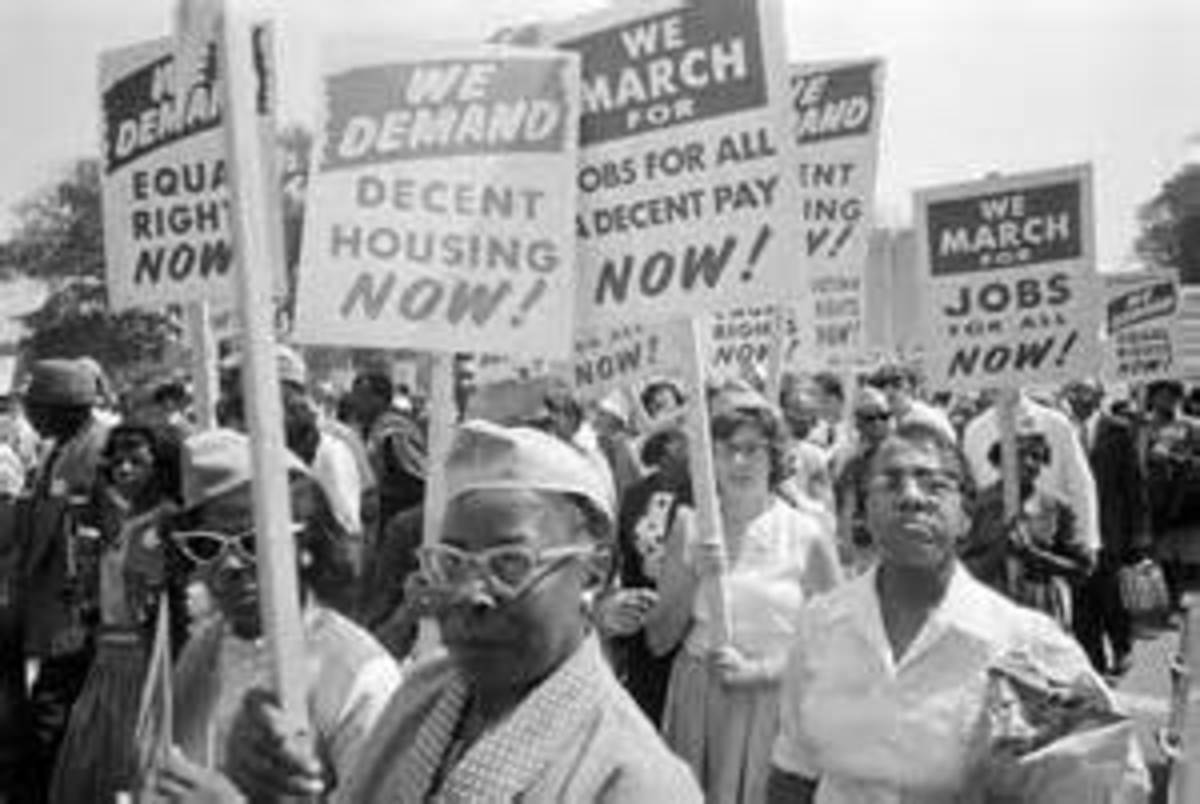How the Gendered Pay Gap in Australia can be Addressed
Introduction
In accordance to a survey conducted by Australian Bureau of Statistics in 2015, men in full time employment earned approximately $1,587.40 per week while the earnings for women were approximately $298.10 less. According to this agency, this is an increase of 18.8% from 1.4% since 2013. In 2015, this figure further increased by 1.4%, subsequently causing concern among stakeholders and gender activists concerning the rising pay gap between men and women in the country. It is quite concerning that in Western Australia, women are paid $484 less when compared with their men counterparts. New South Wales is the worst state when it comes to gender pay gap with a difference of approximately $316.60 per well. On the other hand, South Australia has a fairer pay with a pay gap difference of $151.20 (ABS, 2015). Alongside an increasing level of pay gap between men and women are the conventional barriers that have hindered women from fully participating in the workforce. These barriers include, but not limited to lack of affordable childcare, lack of educational opportunities, and discrimination at the workplace. However, it should be considered that increasing female participation and reinforcing gender equality including leveraging the gender pay gap in the workplace is critical to boosting Australia’s economy and general productivity.
Gendered Pay Gap in Australia
A report by Glassdoor presents results of analysis of pay differences between men and women across German, Britain, United States, and Australia. The survey noted that in Australia, for every $1 earned by a man in the country, a woman earns 83¢. The pay gap is approximately 18 per cent. The research tracked over 1370 employers and 4000 salaries that were reported from the calendar year 2006 to 2015. The sample was 77% men while female constituted 23 per cent. The age group for the participants was from 35 years and above with over 6 years of experience. The survey established that men’s average pay was $99,940 per annum while that for women was $84,218. This creates a gender pay gap of $15,722 between the basic pay of men and women (Chamberlain, 2016).
The gender pay gap in Australia can be illustrated as follows: Men: $1,591.60, Women: $1,309.30, the gap: $282.30.
According to Afshar, and Maynard (2000), it is not only wrong, but also inequitable that women earn lower when compared with men. This, according to him owes to the fact that the significant lower pay for women have contributed to financial insecurity for most of them. In addition, majority of working women find it difficult to meet family costs of living and other expenses that are already high in Australia and other developing countries.
Various factors contributed to a rising gender pay gap in Australia. Among these include workplace discrimination where women are hardly promoted or given high paying jobs (Goldin, 2014). Furthermore, women still do not have equal opportunities in training and education, alongside the disapropriotionate responsibility such as childcare, elderly care, homemaking and so on which have subsequently pressured women to take on jobs that are more flexible and therefore less paying (Ruether, 2012). Moreover, there are also poor policies to ensure that women access to technology, healthcare training and science to encourage development in these careers and pay negotiation. Additionally, there should be programs to support care for the elderly and children to facilitate working women (Goldin, 2014).
How does the Gendered Pay Gap Influence Contemporary Workplaces
From this analysis, it is evident that the gender pay gap is real and hurts most women across the board. Accordingly, women’s earnings are significantly suppressed and they find it hard to balance between family and work. In light of this, it therefore becomes important for stakeholders and policymakers to examine where the economy offers uneven opportunities for women whether in education, career, or training.
According to CPS microdata (2011–2015) those who downplay the gender wage gap argue that women are working on a lower paying careers voluntarily or just by preferring stereotypically female careers that fit their ego and ability. For instance, as revealed by Connell, (2009), women have been barred from taking high paying jobs because of the “gender arrangement” that is inherent in the contemporary society. The author finds that men still dominate in such fields as the military, leadership, policemen, private security, engineering and the likes. This according to the author owes to social construction of gender where feminine and masculine performances are disseminated and displayed, thus contributing to perpetuation of gender differences. However, Connell argues as a structure of relations, gender is constituted in historical processes and can therefore not be reproduced or fixed.
On the other hand, women dominate in such low paying professions including social and community work, nursing, receptionist, secretary, nursing, childcare and housing keeping. However, a survey by microdata (2011–2015) establishes that even if women and men were place at similar occupation whether computer engineers, nurses, cosmetologists, mechanical engineers, nurses, hairdressers, construction workers, men tend to get paid more than their women counterparts (Blau, et al, 2016).
We can also employ the sex role theory in addressing pay discrimination and gender pay differences in the workplace. Sex role theory can work best in explaining the reason for the existence of occupational sexism in the contemporary societies. In historical context, the place of a woman was at home, tending from the families and husbands while men were the bread winners. These assumptions formed the expectations for women and men in the society and workplace occupations. Consequently, the expectations generated gender stereotypes that significantly contributed to establishment of sexism in the work environment, which is referred as occupational sexism (Gilbert et al, 1999). In accordance to this theory, there are three key patterns that explain the association between occupational sexism and the theory. These patterns include a) the tendency of women in taking domestic chores b) the low status of women in occupations c), the tendency of women and women preferring different occupational roles. According to Gilbert et al (1999), these patterns are the basis for the commonality of occupational stereotypes.
The occupational stereotypes and expectancies according to Eagly (1987) are connected to gender biasness in workplaces. For instance, the society expects women to engage in health related disciplines such as nursing, social work and so on while men are supposed to engage in science related fields. This therefore leads to discrimination of men when entering health or caring related fields while women are discriminated when trying to venture into science related fields. According to Eagly, socialization has played a huge role in affecting personal expectations and aspirations by shaping their self perceptions regarding their roles and capabilities. Therefore, when a woman enters a career or profession that is stereotypically considered to be for man, the socialized self perception in her could be influential in making her aware of the potential occupational sexism. This is also applicable to me as well.
Connell argues that if this situation is to be changed, then it is important for individuals to overturn their assumptions that gender differences are natural, fixed or unchanging phenomena. The author tries to challenge this assumption by presenting examples of how women could be good leaders, women working in the military, household management and even positive contribution in the society. Connell continues to argue that if stakeholders see the value of sustaining inequalities for instance income inequality, power and wealth which are currently in the hands of men and leveraging literacy level among women.
On his part, McRobbie (2007) argues that over the last ten years, majority of governments in developed countries (particularly the Western Countries) such as UK and U.S have focused on addressing the issue of gender discrimination in workplaces. For instance, the author notes that in UK, the government has effectively dealt with gender stereotyping in the workplace through various initiatives. Consequently, the government has instituted a novel sexual contract which is focused on empowering young girls and women to rise in their careers and also in getting employment opportunities. Young girls particularly are consistently urged to be hyper-active whether in education, careers or politics so that their contribution may be manifested. Furthermore, the conventional forms of patriarchal authority and gender roles are being transformed through education, awareness programs and empowerment of young girls. This has significantly worked in changing individual and societal perceptions of gender roles and the place of women in the society.
According to McRobbie (2007), the novel sexual contract by the UK government and other developed nations have been integrated not only in employment, but also in education. In achieving their goals, young girls are considered to be ideal in instilling the ideals and using them for female success. Accordingly, young women are empowered and triggered to become wage earning subjects in the changing world. The institutionalization of sex inequality has now been renewed, while gender hierarchy has now been reestablished to give women more autonomy, and empowerment to facilitate career growth.
A number of theories have been advanced to protect the cause of gender equality and leverage on gender discrimination.These theories include but not limited to feminism, sex role theory, psychoanalysis and sociobiology. Feminism is a term used in reference to economic, cultural or political movement that focuses on establishing legal protection and equal rights for women across the spheres. Feminism involves constitutes of philosophies, sociological and philosophical theories that focus on issues related to gender variations alongside a movement advocating for gender equality for women, protection of their interest and rights (Beasley, 1999).
Accordingly, feminism has significantly transformed predominant assumptions in broad areas particularly in Western society and as such, the ideology and ideas presented in the philosophy should be incorporated in the Australian environment. For instance, feminist activists have successfully campaigned for the legal rights of women which include property rights, rights of contract, voting rights and other human rights. Other rights that have been advocated for by this movement include the right for autonomy, bodily integrity, reproductive rights, abortion rights, and workplace rights including equal pay, against discrimination, right for maternal leave and basic rights (Hawkesworth,2006).
Socialist feminism can be employed in addressing the issue of gender gap discrimination in workplaces. The socialist feminism utilizes Marxist ideas in connecting women oppression concerning exploitation, labor and oppression. According to this theory, the inequality between men and women in the workplace have significantly contributed in holding women down and barred their rise. Further, the patriarchal societal system have exploited women through ways such as marriage, childcare, domestic work/home keeping which have greatly devaluated the substantial work done by these women and women in general. Therefore, the women oppression is part of a wider system where everyone in the capitalistic society is affected. In order to change this assumption, all stakeholders must work jointly and focus on bringing change to manage oppression of women in the society (Ruether, 2012).
All employees irrespective of gender have a right to be treated equally in regard to pay as exemplified in the constitution of developed countries. For instance, in Unites States, the government has put in place the U.S Equal Employment Opportunity Commission, Title VII of the civil rights Act, 1964 and the Equal Pay Act 1963. The laws against pay discrimination constitute all forms of payments that are made to or on behalf of all workers as compensation for their employment. The laws also cover all types of compensations which include bonuses, salary, stock options, life insurance, holiday pay and leave, maternity leave, profit sharing, overtime and other allowances. The American Equal Pay Act has successfully succeeded in reducing the gender wage gap across the states. The Act requires that both men and women are treated equally in all employment matters including pay, recruitment, and promotion among others in a similar work environment. What is considered in equal pay include job content, and not necessarily the tiles in determining the substantial equality of jobs. According to this law, all employers are required to pay equal wages to both women and men performing jobs that need substantial similar effort, skills and responsibility under the same working conditions (E.E.O.C, 2016).
A multiplicity of discrimination have come up as a well as the broader feminist theory of intersectionality developed by Crenshaw (1989), a black feminist thinker. Crenshaw is credited for the being the first in employing the term intersectionality in highlighting the multidimensionality nature of what the marginalized groups go through. According to this author, structural intersectionality has placed specific groups of women at the intersection of gender, and race which makes them go through a difference experience than those in different groups. Through the perspective of race and gender, Crenshaw observes that the aspect of intersectionality could be broadened to include the social divisions including sexual orientation, class, age, religion, citizenship and class. Therefore, the aspect of intersectionality therefore offers a theoretical and methodological approach which relays the simultaneous and multiple oppressions which the marginalized groups go through. Brah (1996) argues that these kinds of oppressions may not be easily abstracted, hierarchical, compartmentalized or rendered additive. Consequently, it is critical to establish links between them as well as ways in which the society is experienced and structured through various differentiations.
Conclusion
This analysis portrays Australia as a country that is unconcerned with leveraging the pay gap between women and men. This gives an implication that the aspect of gender equality is something that is still ignored by responsible parties. However, in order to propel the economy of Australia, improve productivity and quality of life, employers, the government and other stakeholders need to support women by ensuring that gender pay gap is decreased as much as possible. Measures should be instituted to address the issue of gender discrimination in the workplace, whether due to pregnancy possibilities or perception to enable women enter the workplace.








